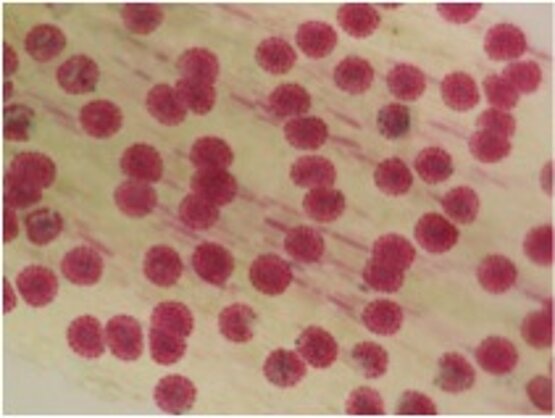Molecular basis of Dionaea prey capture and nutrient utilization
Molecular basis of Dionaea prey capture and nutrient utilization
The Venus flytrap (Dionaea muscipula) fascinates scientists because of its ability to capture small animals by a sophisticated snap-trapping mechanism. The insect prey is digested and the uptake of prey-derived components enables the venus flytrap to cope with the limitations of extremely nutrient-poor soils at its natural habitat.
As a part of the Dionaea-Project, we aim to describe the molecular mechanisms underlying prey digestion and nutrient aquisition. The venus flytrap digests its animal prey by an enzymatic cocktail which is secreted by gland complexes at the inner trap surface upon prey recognition (see picture). The protein composition of the secreted fluid was analyzed by mass spectrometry, which allowed the identification of a multitude of hydrolytic enzymes within the digestive cocktail (Schulze et al., MCP 2012). We intend to reveal the individual signalling steps leading to secretion, prey digestion and nutrient uptake.
We are currently applying various methods:
- Molecular Biology: cloning of secreted proteins & transport proteins, expression analysis (real-time qPCR)
- Proteomic analysis of the secreted fluid: Mass spectrometry, in close collaboration with W.X. Schulze (University of Hohenheim)
- quantitative RNA sequencing: expression analysis, in close collaboration with F.Bemm (University of Würzburg)













